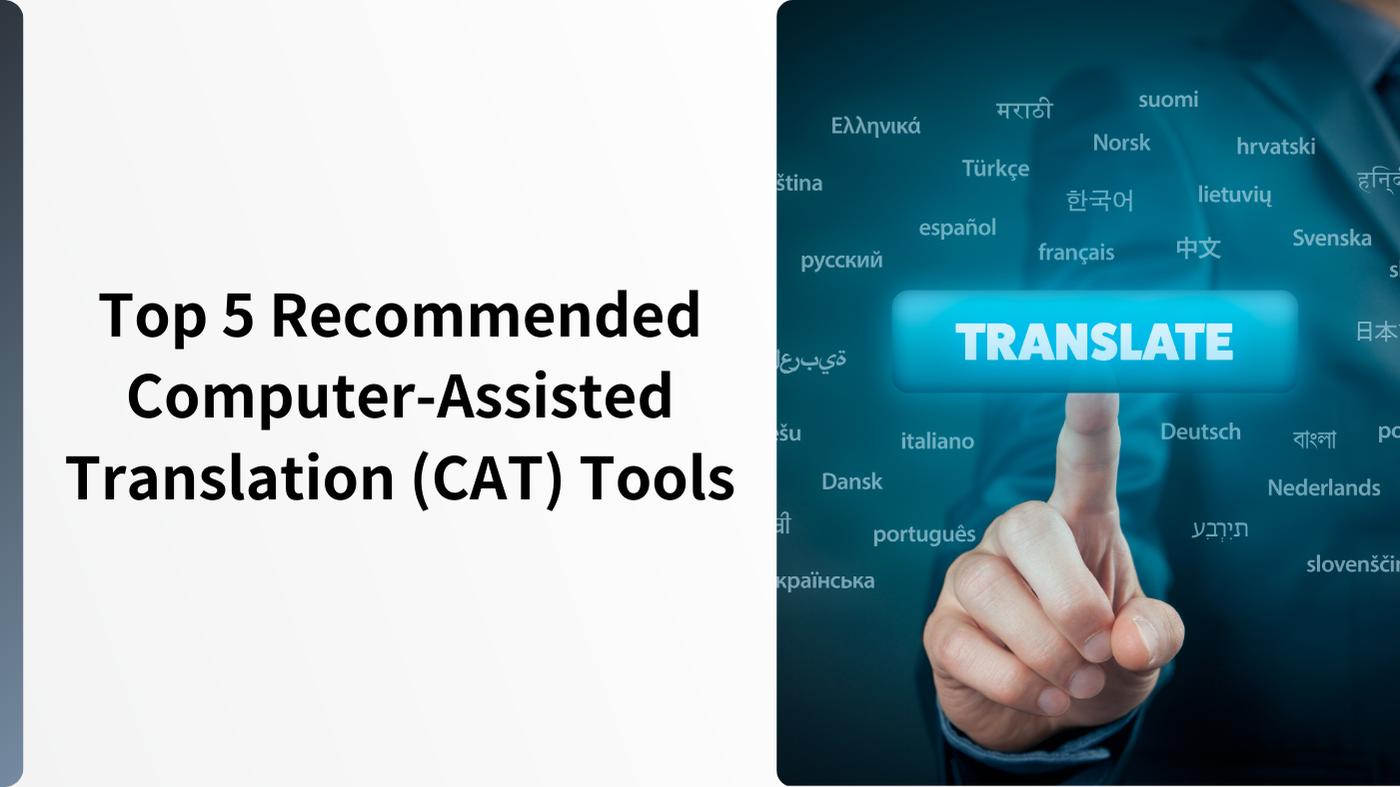Computer-Assisted Translation Tools
In recent years, the demand for translation has increased, so efficiency is now essentials even in professional translations. Computer-Assisted Translation (CAT) tools are the main means of supporting the efficiency. When used effectively, CAT tools can significantly improve the efficiency of translation tasks.
I this article we will explain about the frequently heard term “CAT tools”, their benefits and differences from the often-confused machine translation (MT), and introduce some of our recommended tools.
What Are Computer-Assisted Translation (CAT) Tools?
CAT stands for Computer Assisted Translation. In simple terms, it means using a computer system to assist with the translation process performed by translators and linguists (editing, managing, and storing data, etc.).
CAT tools help avoid omissions, maintain consistency, and improve translation quality.Reuse of accumulated translation data, also increases translation speed for large-volume projects. They are especially useful for projects when translation is being handled by multiple translators.
CAT tools are particularly effective for documents where the same words and phrases are frequently repeated, such as manuals, specifications, reports, applications, declarations, and contracts, or when a large amount of translation is needed in a short time.
What Are the Benefits of CAT Tools?
1) Improved Accuracy and Speed due to Translation Memory
CAT tools have a feature called TM (Translation Memory), which stores pairs of source and target text from previous translations in a database. By referring to this paired data,past translation results can be quickly retrieved. It also helps to ensure consistency in terminology and style.
For large translation volumes, it enables shorter working time compared to translation from scratch. The translation accuracy also gets improved.
2) Reduce Omissions and Missing Translations
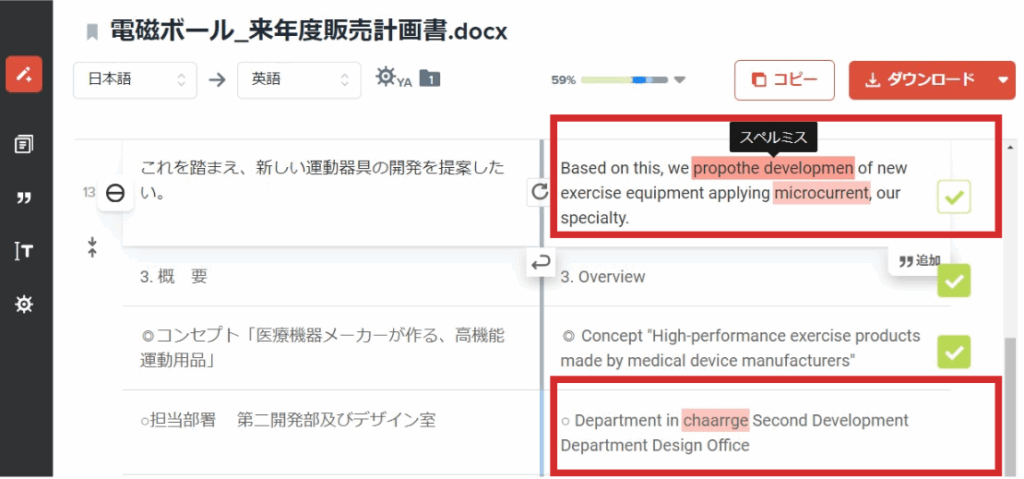
When translating large volumes manually, omissions and missing translations become more likely. CAT tools divide source text into individual segments (sentences) and display the corresponding translations alongside them, reducing the chance of overlooking any text.
Some CAT tools also have QA (Quality Assurance) functions to check for omissions, source-target mismatches, tag mismatches, number formatting errors, or repeated words (such as “the the”).
3) Enhance Collaboration
When multiple translators work on the same document,they can share translation memory within the CAT tool, ensuring consistency in terminology and phrasing.. Some tools also include communication features so translators for internal communication within the tool.
Certain tools allow account admins to control users’ access, thereby protecting translation assets and strengthening security.
4) Visualization of the Translation Process
Progress can be tracked in real time, making it easy to check how much work has been done without contacting translators directly.When using CAT tools it also becomes possible to compare old and new source texts, identifying the parts that require new translation. This helps to estimate workload (in days or team size) and provides an overview of the entire translation process.
CAT Tools and Machine Translation Are Different
CAT tools are often confused with machine translation (MT). Machine translation refers to translation done automatically by a computer, usually referred to as a “machine translation engines.”
In contrast, CAT tools are software or applications that support the translation process. Machine translation may be one of functions within a CAT tool, but they are not the same thing.
Improve Workflow Efficiency by Integrating Machine Translation with CAT Tools
While machine translation accuracy has improved significantly in recent years, errors and nuance issues may still occur . It may also fail to translate correctly the company-specific terminology. In situations requiring high precision; such as manuals, quotes, or publicly available translations, human review is essential.
By combining machine translation with CAT tools, you can further improve efficiency. First, machine translation can provide a draft, which you then refine by referencing to translation memory from past projects.
CAT tools can calculate the match rate between past translations and the current source text. High matches can be reused directly, while low matches can be replaced with machine translation output or manually translated from scratch.
Recommended CAT Tools (Free and Paid)
Many computer-assisted translation (CAT) tools are available on the market, ranging from free to paid options, each with its own unique features and capabilities. It is important to compare and evaluate them based on your intended use and specific workflow requirements.
In this article, we will introduce Yaraku Translate, OmegaT, Smartcat, Phrase TMS (former Memsource), and Trados Studio.
Yaraku Translate
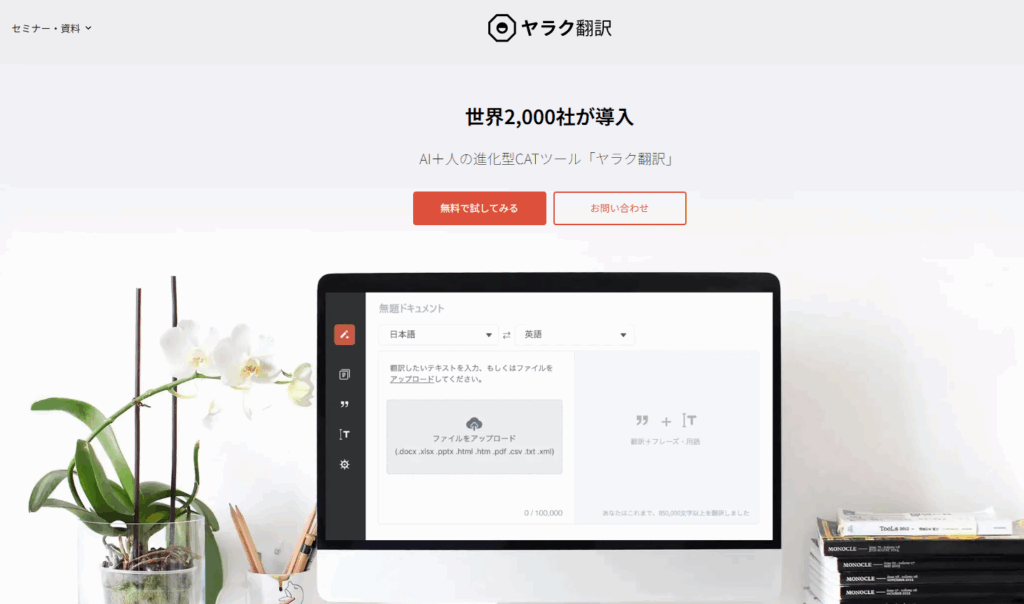
Yaraku Translate is an advanced AI-powered translation platform that integrates multiple translation engines, including ChatGPT, Claude, Gemini, Google Translate, Microsoft Translator, Papago, and Yaraku Translate’s proprietary engine.
Its ”Check Assistant” visually highlights errors and omissions, helping with corrections. Personalized translation is also possible through registered Phrases and Glossaries.
You can seamlessly edit automatic translation results by referring to the files preview while editing, and save the edited text to the Phrases for reuse in future translations.
OmegaT
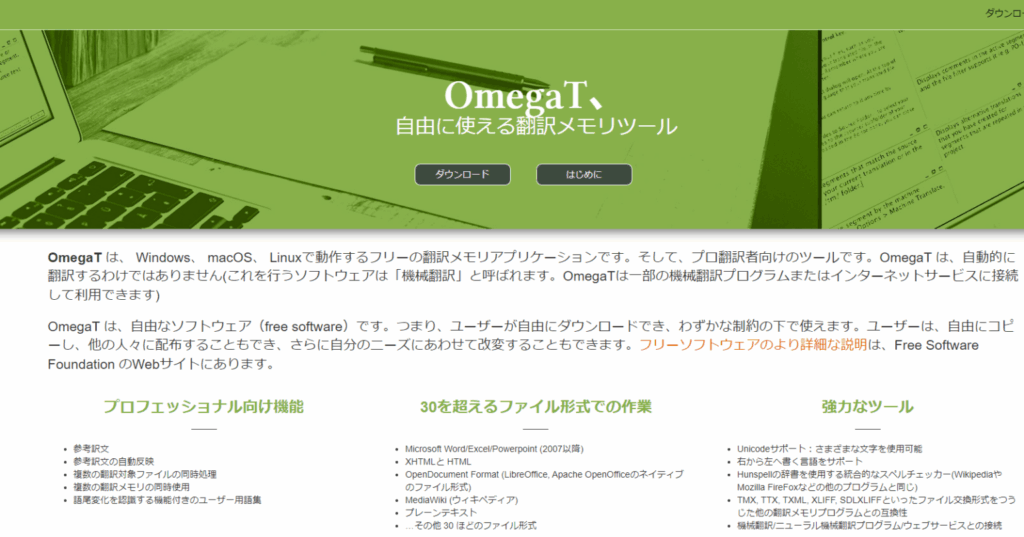
OmegaT is a free, open-source CAT tool developed by Keith Godfrey in 2000. It checks your translations against previous translations and displays similar results for reference. You can add your TMs (translation memories) and glossaries for better support.
It’s ideal for translators familiar with CAT tools who want robust functionality at no cost.
Smartcat
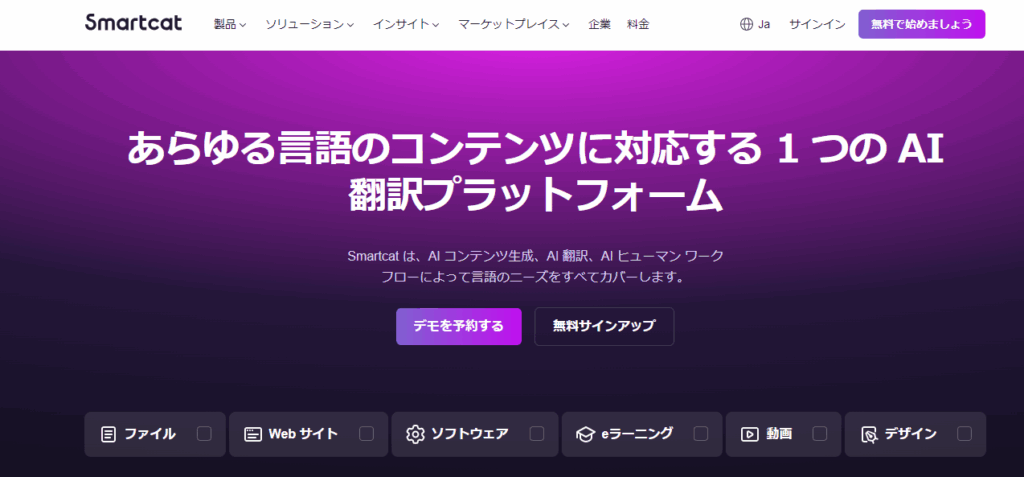
Smartcat is a free cloud-based CAT tool, originally developed for in-house use by Abbyy Language Solutions. It offers an intuitive interface, online project management, and the ability to order translations directly from the platform.
Phrase TMS (formerly Memsource)

Phrase TMS is a cloud-based CAT tool released in 2010 in the Czech Republic. It integrates with over 25 machine translation engines and uses AI to identify untranslatable content (symbols, numbers, code, etc.).
It offers four pricing plans; Team Start, Team, Ultimate, and Enterprise,starting from $29/month (annual billing). Although it is cloud-based, a desktop editor can be installed to allow work in environments without internet access. The interface is also well known for its easy to use interface.
Trados Studio

Originally developed by the German company Trados GmbH, this computer-assisted translation (CAT) tool is currently owned by RWS. It is used by more than 270,000 translators worldwide and holds over 80% market share in the industry.
In addition to translation memory, it features a terminology management tool called MultiTerm. By adding confirmed terms in MultiTerm before starting translation, you can ensure consistent terminology across the entire project. The latest Trados Studio 2024 supports over 50 different file formats, including DOC, HTML, FrameMaker, XML, SGML, XLS, and InDesign.
The Trados Studio Professional edition for translation teams is priced at ¥350,000 per year, while the price for the Trados Studio Professional Network version is available upon inquiry. A 30-day free trial is available (as of August 2023).
With its robust set of features required for handling large-scale projects, it is frequently used in the field of industrial translation.
Yaraku Translate Allows You to Use Multiple Translation Engines
The advanced Yaraku Translate CAT tool supports multiple engines, including:
- ChatGPT-4.1
- ChatGPT-4.1 mini
- Gemini
- Claude
- Google Translate
- Microsoft Translator
- Yaraku Translate
- Papago
- Minna no Jidou Honyaku@KI (optional)
Yaraku Translate features a function that allows you to compare the results of multiple translation engines side by side on a single screen, making it easy to determine which engine provides the most suitable translation.
It also supports PDF file translation and is known for its intuitive, user-friendly interface. With robust support for both Japanese and English, it can be used with confidence by anyone.
Regular updates add new features, reflecting our users’ feedback and ensuring that users always enjoy an optimal translation experience.
Exceptionally Simple and User-Friendly Interface
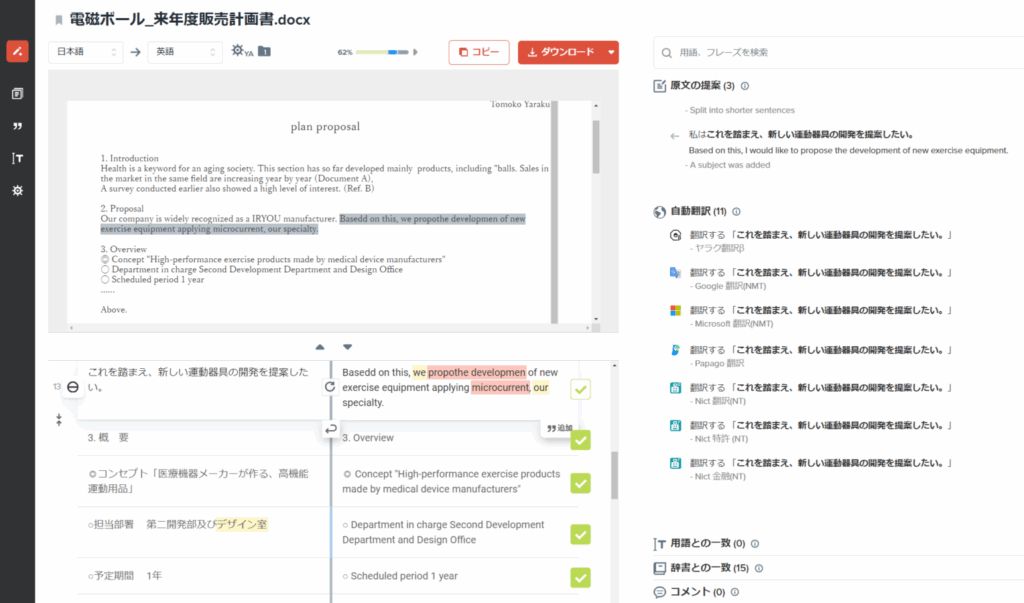
Yaraku Translate is designed to be intuitive, even for first-time users. Within one platform you can easily use the machine translation,use the built-in editing assistance, and share the documents with other users for collaborative editing. The Company Plan offers increased security guarantees, assuring the safety of sensitive documents translation.
It supports 36 languages and 9 file formats. The Company Plan allows unlimited monthly translations, with up to 100,000 characters per translation (with ChatGPT-4.1 mini up to 150,000 characters).
Summary: Improve Translation Efficiency with CAT Tools
CAT tools have become essential for translation work. Combining them with machine translation further boosts efficiency and accuracy.
Yaraku Translate offers a 14-day free trial for the Company Plan, with no automatic upgrade to paid service. Try it to experience its simplicity, ease of use, and robust security.

